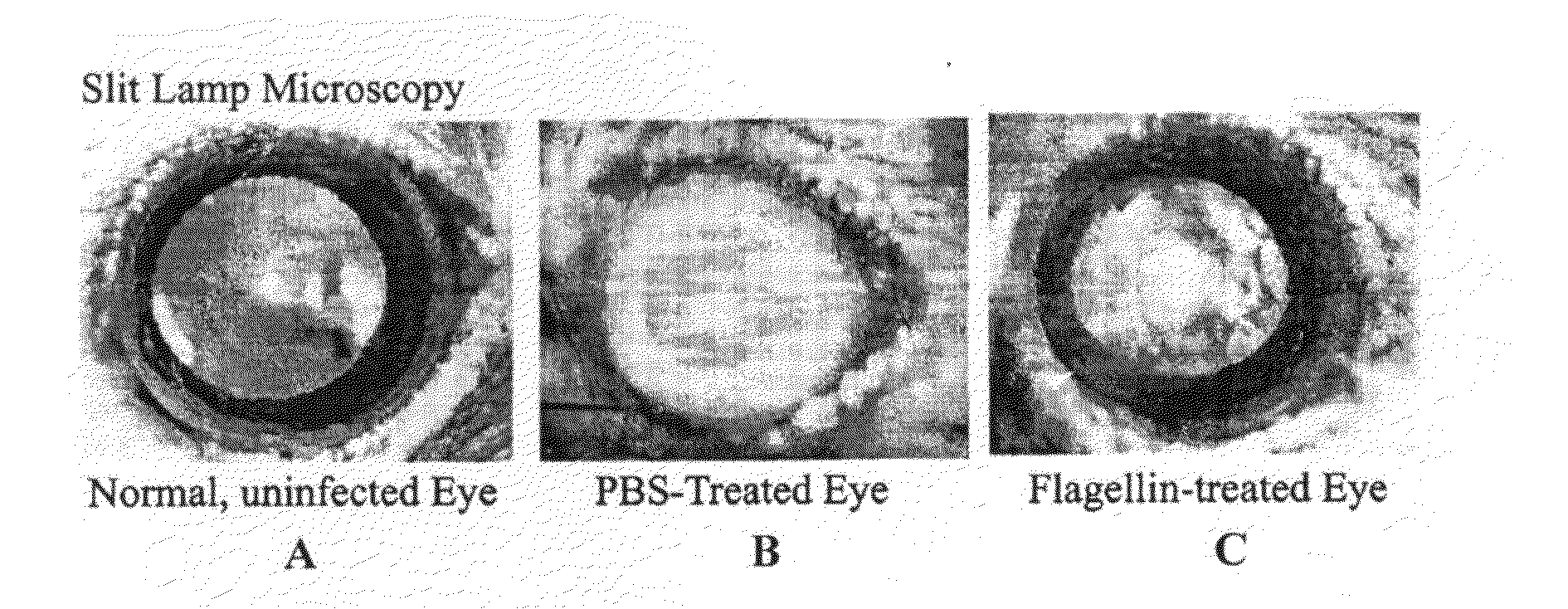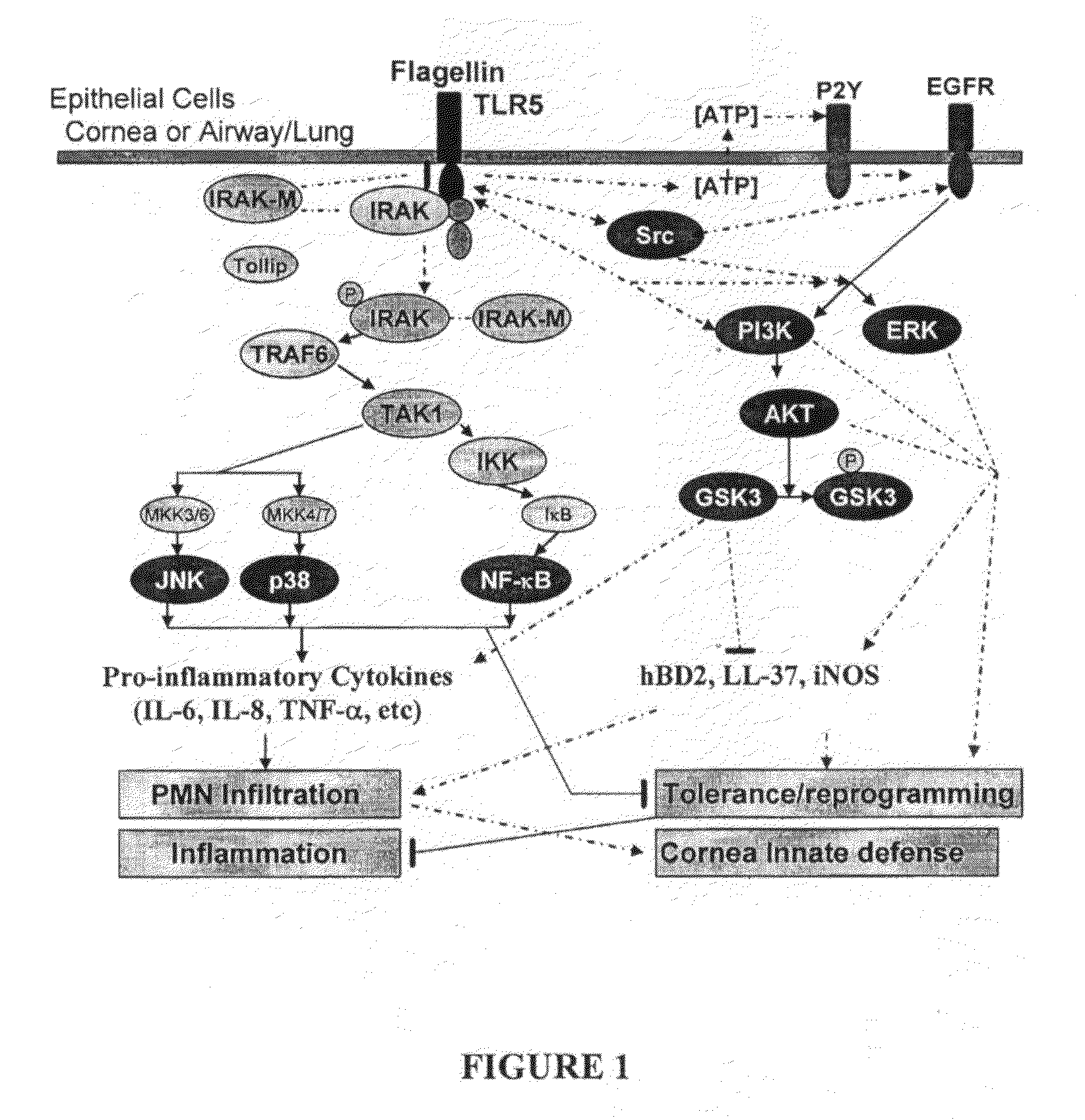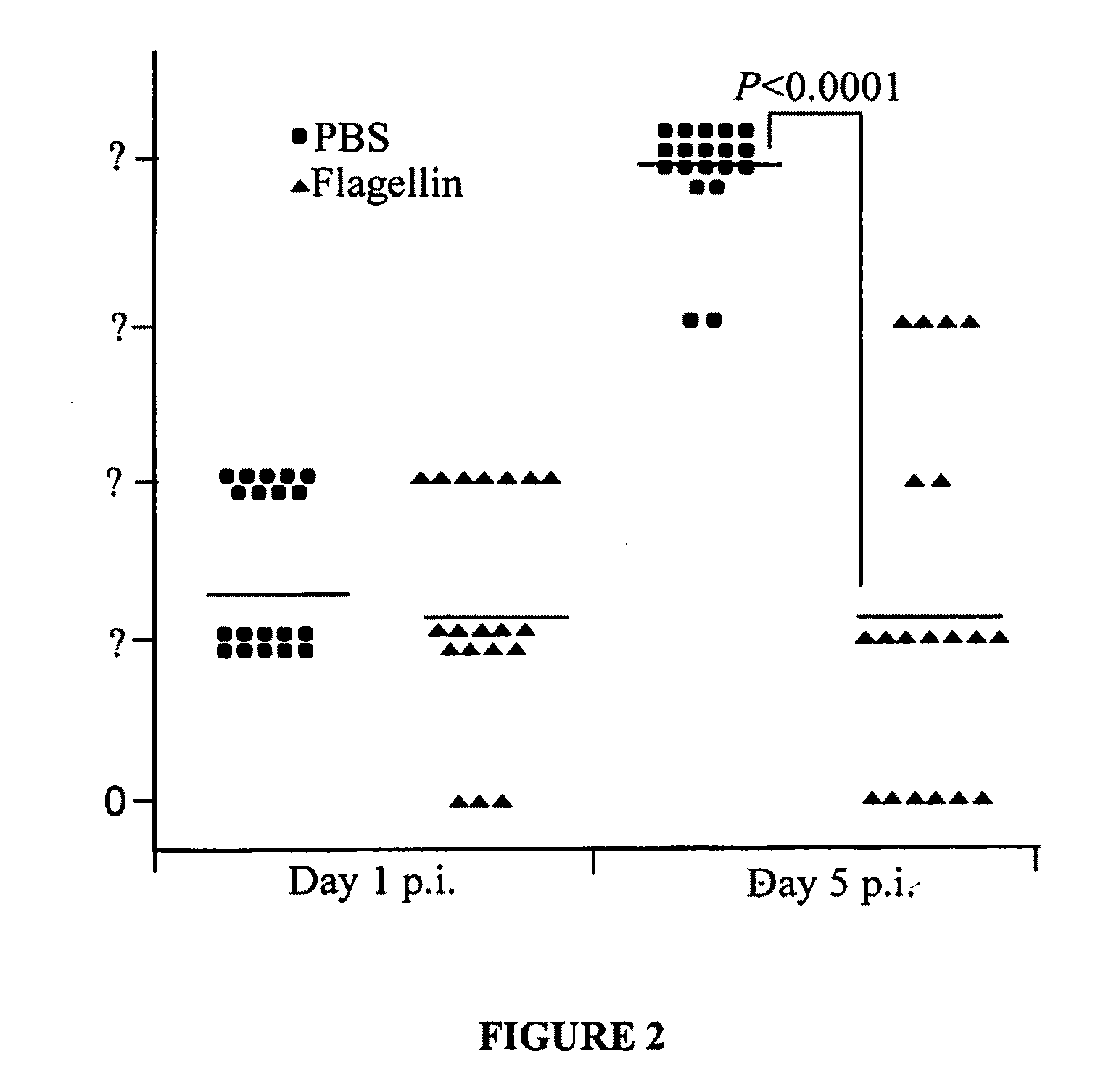Use of flagellin to prevent and treat gram negative bacterial infection
a gram negative bacteria and flagellin technology, applied in the field of flagellin, can solve the problems of respiratory failure and death, permanent vision loss in some patients, and recognized as a significant public health problem
- Summary
- Abstract
- Description
- Claims
- Application Information
AI Technical Summary
Problems solved by technology
Method used
Image
Examples
example 1
Flagellin as Therapeutic Reagent to Induce Tolerance, to Dampen Inflammation, and to Control Infection
[0060]An animal model of Pseudomonas keratitis with similar pathogenesis to human Pseudomonas keratitis was used in this Example. Eight-week-old female C57BL / 6 (B6) mice were used in the following experiments. In each experiment, the left cornea of each anesthetized mouse was scarified with three parallel 1 mm incisions using a sterile 255 / 8 gauge needle under a stereoscopic microscope. Scarified corneas were challenged topically with 1.0×106 CFU / μL of P. aeruginosa ATCC strain 19660 (cytotoxic strain) in a 5 μl dose. Eyes were examined macroscopically at daily day postinfection (p.i.) to monitor the course of disease visually. The cornea of the infected mice perforated within 5 to 7 days.
[0061]Lipopolysaccharide-removed flagellin purified from P. aeruginosa by the inventors was administrated subconjunctivally at a dosage of 100 ng / eye 24 h prior to bacterial infection. To ensure to...
example 2
Activation of HCECs by Flagellin-TLR5
[0073]TLR5 recognized Pseudomonas aeruginosa flagellin and triggered the expression and / or release of proinflammatory cytokines in human corneal epithelial cells (HCECs). In the present Example, assays were performed to determine whether activation of HCECs by flagellin-TLR5 results in tolerance as manifested by decreased cytokine production and hyporesponsiveness to subsequent P. aeruginosa infection.
[0074]HUCL, a telomerase-immortalized HCEC line, and primary culture of HCECs, were pretreated with low dosages 50 ng / ml of P. aeruginosa (PA01) flagellin for a period of 12 to 24 h to induce tolerance. The flagellin-tolerized HCECs were then challenged either with higher dose of flagellin (250 ng / ml) or live P. aeruginosa at MOI of 50-100. The activation of NF-κB and MAPKs (p38, JNK, ERK) was assessed by Western blotting using phosphor-specific antibodies. RT-PCR was used to detect the changes in mRNA levels of negative-regulators of TLR-signaling ...
example 3
Flagellin and Pam3 Induced TLR Self-Tolerance but not Cross-Tolerance in HCECs
[0077]This Example relates to the goal of exploiting the mechanism of tolerance as a novel approach for anti-inflammatory therapy. To be useful, TLR agonists used should be sufficient to induce tolerance or adaptation and yet not high enough to cause a robust inflammatory response in cells. To that end, 1 μg / ml Pam3 (a synthetic lipopeptide) was used (10 μg / ml was routinely used in the literature (Kumar, A., et al. 2005. Microbes Infect. 8:380-389), and 50 ng / ml PA fg (250 ng / ml was determine to give maximal stimulation; Zhang, J., et al. 2003. Invest Opthalmol Vis Sci 44:4247-4254), to first determine whether prolonged incubation (24 h) of these ligands prevented NF-κB activation in response to subsequent exposure to the same ligands at higher dosage in HCECs.
[0078]TLR agonist-induced tolerance can be defined as homo-tolerance (i.e., the tolerizing and the secondary stimuli use the same TLRs) or hetero (c...
PUM
 Login to View More
Login to View More Abstract
Description
Claims
Application Information
 Login to View More
Login to View More - R&D
- Intellectual Property
- Life Sciences
- Materials
- Tech Scout
- Unparalleled Data Quality
- Higher Quality Content
- 60% Fewer Hallucinations
Browse by: Latest US Patents, China's latest patents, Technical Efficacy Thesaurus, Application Domain, Technology Topic, Popular Technical Reports.
© 2025 PatSnap. All rights reserved.Legal|Privacy policy|Modern Slavery Act Transparency Statement|Sitemap|About US| Contact US: help@patsnap.com



